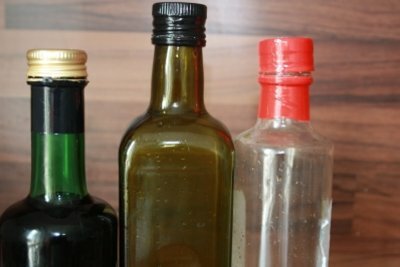Measure the density of oil
It is important to measure the density of liquids, especially oil, not only for scientific research, but also for projects or internships. There is a simple experiment for that.

What you need:
- Oil, especially cooking oil
- scale
- Beaker (with volume division)
- Paper and pencil
- Possibly. calculator
Density - what is it?
- The density is clearly a measure of how dense the atoms or molecules of the substance in question are attached to one another and how heavy they are.
- As a physical quantity, density is the ratio of the mass of a substance (called weight in everyday life) to the volume that this substance occupies.
- In formulas: d = m / V, where m = mass or Weight (in kilograms kg), V = volume (in m³) and d is the density (in kg / m³). Another common unit for the density of a substance is grams per cubic centimeter (g / cm³).
- A special value is the density of water with d = 1 g / cm³ under normal conditions. Solids generally have a higher density, the density of liquids fluctuates around the water value, oils are lighter (they also swim in water). And gases like air or nitrogen have very low densities.
Measure the density of cooking oil - this is how it works
- If you want to measure the density of cooking oil, you can do this quite easily.
- You have to measure two quantities, namely the weight of a certain amount of cooking oil and the volume occupied by that oil.
- For this you need a beaker (measuring cup) with volume graduation and the most accurate scale possible.
- First, weigh the beaker you are using on the scales.
- Then pour a certain but fixed amount of cooking oil into your beaker, for example 250 ml.
- Now weigh the beaker filled with oil on the scales again.
- Then subtract the weight of the beaker from the weight determined. This is how you get the dimensions or the weight of the cooking oil (in grams).
- Now you have to determine the volume of the oil using the milliliter information on the beaker. The conversion is easy, because the following applies: 1 ml corresponds to a volume of 1 cm³.
- You can now calculate the density of the oil by dividing the weight of the oil by the volume.
- An example: You have filled in V = 250 ml = 250 cm³ of cooking oil. The weight of your beaker is 200 g; when filled with oil, the scale then shows 440 g. The weight of the oil is therefore 240 g.
- Calculate the density of this oil as d = 200 g / 240 cm³ = 0.83 g / cm³. Oil is lighter than water!
ml of water to g - this is how you convert volume to weight
In the case of water, the conversion of milliliters ml, a unit of volume, into grams g, ...
How helpful do you find this article?
